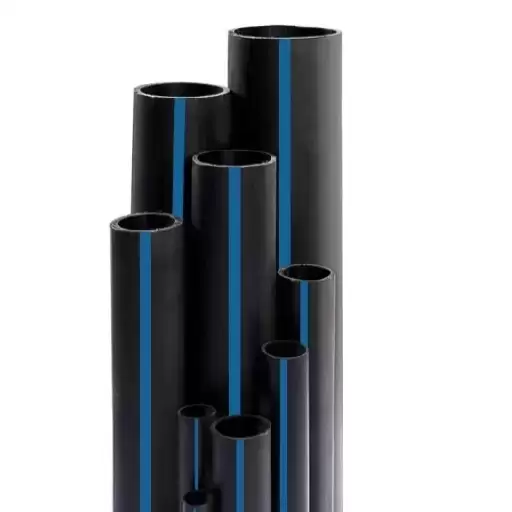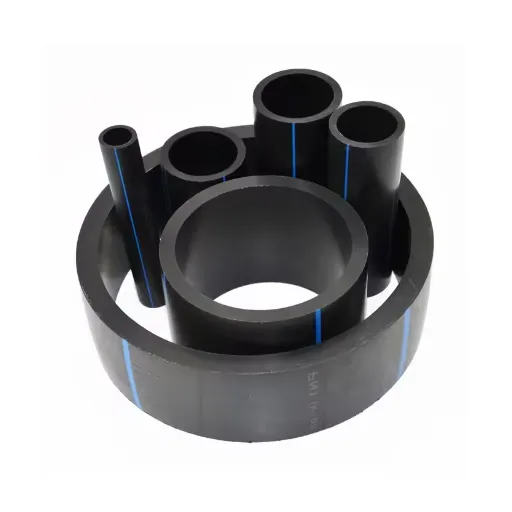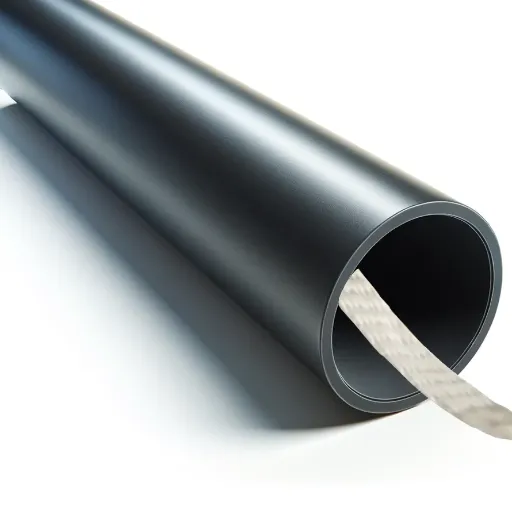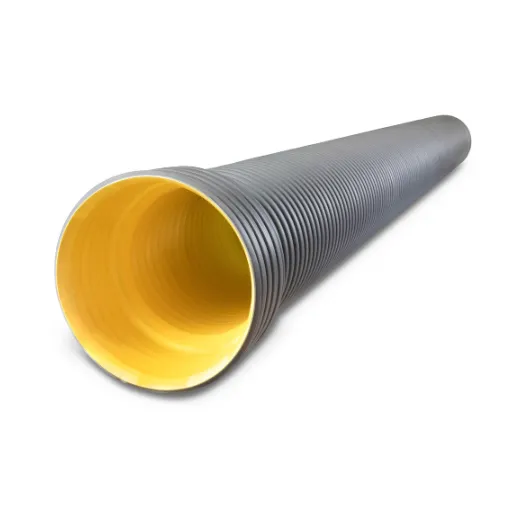High-density polyethylene (HDPE) DR11 pipe has gained widespread recognition across various industries for its exceptional durability, flexibility, and resistance to corrosion. Whether used in water distribution systems, natural gas pipelines, or industrial applications, HDPE DR11 pipe has become a preferred solution for its ability to withstand demanding environmental conditions while maintaining structural integrity. This comprehensive guide will explore the key applications, technical specifications, and best practices for installation, ensuring you have a complete understanding of this versatile piping system. By the end of this article, you’ll have the knowledge needed to determine whether HDPE DR11 pipe is the ideal solution for your specific project requirements.
Overview of HDPE DR11 Pipe
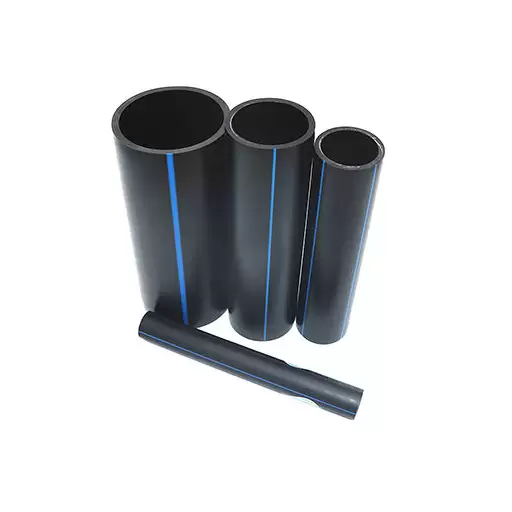
Description of HDPE Pipes
High-Density Polyethylene (HDPE) pipes are robust and flexible piping systems made from thermoplastic material. Being highly resistant to corrosion, chemical attack, and environmental stress, these pipes have immense applications in industrial, municipal, and agricultural domains. These pipes are classified according to density and grade of material to ensure tensile strength and durability for longer periods compared to traditional materials such as concrete or metal.
Key Characteristics:
- Resist high internal and external pressures
- Manufactured through precise molding for uniform wall thickness
- Structural consistency is required for high-pressure applications
- Easy installation with heat fusion joints
- Lightweight for cost-effective transport and handling
The HDPE pipes of DR11 denote the balanced dimension ratio in wall thickness and inner diameter, optimized for applications requiring medium pressure resistance and flexibility. The design considers an easy installation procedure with joints formed by heat fusion that have no chances of leakage or system failure.
Key Features of DR11 Pipes
| Feature | Benefit | Application Impact |
|---|---|---|
| High Pressure Rating | Withstands high internal pressures without structural integrity loss | Suitable for demanding water and gas distribution systems |
| Corrosion Resistance | No chemical reactions cause rust or degradation | Virtually maintenance-free over time |
| Heat Fusion Installation | Permanent, leak-proof joint connections | Enhanced pipeline system integrity |
| Lightweight Design | Easy handling and reduced transportation costs | Cost advantages in project implementation |
| Chemical Resistance | Compatible with numerous industrial chemicals | Versatile for industrial and municipal applications |
Benefits of Using Black HDPE
Black HDPE pipes are renowned for their superior qualities that make them suitable for a wide range of applications:
- UV Resistance: Excellent resistance to UV rays allows for long service life under harsh outdoor conditions without additional coating
- Flexibility & Impact Resistance: Low chance of cracking or breaking under stress-induced loads, even during winter periods
- Smooth Interior Surface: Better flow capacity with greatly diminished friction losses
- Energy Efficiency: Higher operational performance and energy savings during system operation
- Cost-Effectiveness: Superior and economical solution for various piping applications
Applications of HDPE DR11 Pipe

Construction Industry Uses
HDPE DR11 pipes remain essential in construction projects for their flexibility, durability, and ability to withstand environmental stresses. These applications include:
- Water Supply Systems
- Residential and commercial construction projects
- High pressure resistance without compromising integrity
- Excellent corrosion resistance when exposed to chemicals and UV rays
- Stormwater and Drainage Systems
- Extremely smooth internal walls maximize flow capacity
- Limit friction-related losses and reduce blockages
- Flexible enough to withstand ground shifts without cracking
- Geothermal Applications
- Critical components of closed-loop geothermal heating and cooling systems
- Thermal conductivity and strength allow efficient energy transfer
- Support for sustainable construction practices
Agricultural Applications
Irrigation Efficiency Improvement: Studies reveal that advanced HDPE DR11 piping systems can enhance water-use efficiency by up to 30%, crucial for water-scarce regions.
HDPE DR11 pipes have increasingly penetrated irrigation systems in agricultural applications:
- Drip and Sprinkler Irrigation: Sustain impact of high pressures, UV radiation, and varying temperatures
- Water Transportation: Efficient transport to sprawling agricultural fields with minimal water wastage
- Chemical Compatibility: Resist corrosion and chemical reactions from fertilizers and treatments
- Subsurface Drainage: Form drainage channels to prevent waterlogging and maintain optimal soil moisture
- Liquid Fertilizer Transport: Handle liquid fertilizers and livestock operation waste efficiently
Water Management Systems
Modern water management systems incorporate HDPE DR11 pipes with advanced technologies:
| Technology Integration | Application | Benefits |
|---|---|---|
| IoT-enabled devices | Real-time monitoring and control | Optimized water distribution networks |
| Smart sensors | Flow rates, pressure, and quality measurement | Centralized control system data |
| Predictive analytics | Automated water systems | 30% reduction in municipal water loss |
| Remote sensing technology | Precision irrigation | Targeted irrigation timing and location |
| Drone technology | Aerial monitoring | Water conservation and improved crop resilience |
Specifications and Dimensions
Pressure Ratings of HDPE DR11
Understanding DR (Dimension Ratio): DR11 means the pipe wall thickness is approximately 1/11th of the pipe’s outer diameter. This ratio directly influences the pressure rating, with thicker walls providing better pressure resistance.
| Specification | Value | Conditions |
|---|---|---|
| Maximum Working Pressure | 160 psi | At 73°F (23°C) |
| Temperature Derating | Required | Above 80°F (27°C) |
| Wall Thickness Ratio | 1:11 | Outer diameter to wall thickness |
Important Note: Pressure de-rating should come into play when installation environments exceed 80°F (27°C), as HDPE pipes lose structural integrity with temperature increases.
Pipe Lengths and IPS Standards
HDPE DR11 pipes are manufactured in various configurations to meet different project requirements:
- Straight Pipes: Typically 40 or 50 feet in length
- Coiled Options: Available from 100 to 500+ feet, depending on diameter and application
- IPS Standards: Ensure dimensional uniformity and outer dimension specifications
- Compatibility: Allow fittings and equipment integration across different manufacturers
Comparing Sizes and Fittings
| Diameter Range | Common Applications | Fitting Types |
|---|---|---|
| 1/2 inch – 4 inches | Residential water supply | Couplings, elbows, tees |
| 6 inches – 12 inches | Commercial and municipal | Reducers, flanges, valves |
| 16 inches – 63 inches | Industrial and large infrastructure | Custom fittings, specialized connections |
Connection Methods:
- Heat fusion welding
- Electrofusion methods
- Mechanical connections
Standards Compliance:
- ISO 4427 international standards
- ASTM F2329 specifications
- Quality, safety, and durability uniformity
Installation Guide for HDPE DR11 Pipe
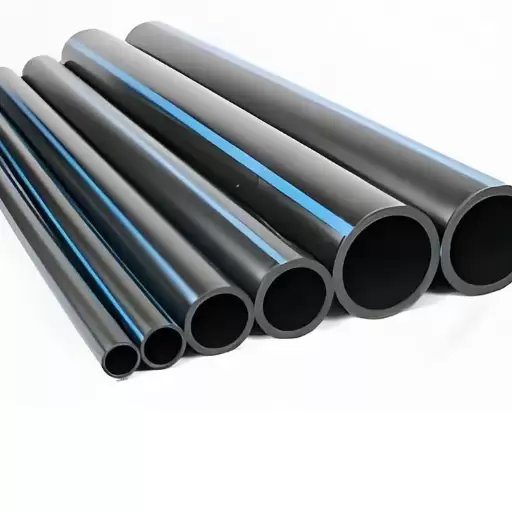
Preparation for Installation
Critical Preparation Steps: Proper preparation is essential for successful installation and long-term performance of HDPE DR11 pipes.
- Site Inspection and Assessment
- Evaluate environmental conditions and soil characteristics
- Identify potential barriers that may interfere with installation
- Check ground stability for loose or unstable soils
- Equipment Preparation and Calibration
- Fusion machines and pipe rollers
- Measuring instruments and alignment tools
- Cleaning equipment for pipe ends
- Material Inspection and Compliance
- Verify conformity with ASTM F714 or ISO 4427 specifications
- Check for damage, contamination, or defects
- Ensure proper compatibility across the system
- Planning for Environmental Factors
- Account for thermal expansion and contraction
- Incorporate expansion joints for temperature variations
- Ensure proper pipe alignment to prevent stress concentration
Step-by-Step Installation Process
- System Layout PlanningStudy the system’s design thoroughly. Mark component locations including valves, joints, and anchor points to ensure exact alignment with flow direction. Use laser-leveling tools or digital alignment systems for improved accuracy.
- Material Preparation and InspectionPrior to installation, inspect materials for damage or irregularities. Check pipes against specifications for diameter tolerances and wall thicknesses. Ensure cleanliness to prevent contamination that could impair system integrity.
- Pipe Cutting and BevelingUse mechanical pipe cutters or laser-guided cutting tools for precise dimensions. Apply beveling on edges to be welded to ensure uniform weld penetration. Follow manufacturer guidelines for specific bevel angles.
- Pre-Fit ComponentsPosition pipes and fittings in place to establish alignment and compatibility. This dry fitting ensures overlaps, gaps, and misalignment can be addressed before final joining materials are applied.
- Joining Methods ImplementationFollow manufacturer technical data sheets for selected joining methods (solvent welding, flange-based joints, or thermal fusion). Clean and prepare all surfaces for optimal bonding. Monitor temperature with calibrated equipment for thermal methods.
- Anchoring and Support SystemsProvide sustaining supports and anchors to maintain system equilibrium with minimum stresses from thermal expansion and operational forces. Calculate support spacing using pipe material properties and engineering standards.
- Pressure Testing and ValidationConduct pressure testing using hydrostatic or pneumatic media according to regulations. Pressurize slowly to test levels while monitoring for leakage or weakness. Record test data for future reference.
- Final Inspection and CommissioningPerform thorough inspection of the complete system for visible flaws or discrepancies. Verify proper installation, tightening, and security. Begin commissioning by gradually introducing operational fluids while observing system performance.
Common Mistakes to Avoid
Critical Installation Errors: Avoiding these common mistakes ensures successful installation and optimal system performance.
| Common Mistake | Consequences | Prevention Strategy |
|---|---|---|
| Insufficient Pre-Installation Inspection | Operational delays and system inefficiency | Thorough component inspection before installation |
| Improper Component Alignment | Undue stresses, premature wear, system failure | Use precise alignment tools during assembly |
| Incorrect Fastener Torque | Thread damage, deformation, or loose components | Follow specified torque requirements |
| Skipping Leak Tests | Compromised system integrity and hazardous conditions | Conduct rigorous leak testing procedures |
| Inadequate Personnel Training | Handling errors and maintenance issues | Ensure proper training for all personnel |
| Poor Documentation | Difficult troubleshooting and maintenance | Maintain detailed installation and test records |
Maintenance Tips for HDPE DR11 Pipe
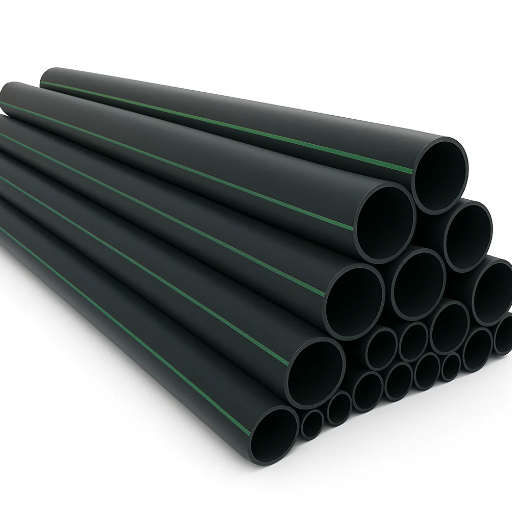
Regular Inspection and Cleaning
Effective maintenance of HDPE DR11 pipes requires systematic inspections and cleaning to preserve operational efficiency and performance over time:
- Visual Inspections:
- Check for surface abrasion, deformation, or joint problems
- Pay special attention to high-stress areas and underground applications
- Focus on bends and areas with environmental exposure
- Internal Cleaning Methods:
- Mechanical pigging systems for routine maintenance
- Hydro-jet cleaning to prevent sediment and biofilm accumulation
- Regular cleaning to maintain flow capacity and prevent blockages
- Advanced Testing Techniques:
- Non-destructive testing (NDT) for subsurface flaw detection
- Ultrasonic testing during operation
- Infrared thermography for potential weakness identification
Best Practices for Longevity
Predictive Maintenance Advantage: Modern sensor networks and machine-learning algorithms can predict failures before they occur, allowing efficient repair scheduling and resource allocation.
| Maintenance Practice | Technology/Method | Benefit |
|---|---|---|
| Predictive Maintenance | Sensor networks + ML algorithms | Predict failures before occurrence |
| Material Enhancement | High polymers, alloys, coatings | Boost durability and corrosion resistance |
| Real-time Monitoring | Hydrostatic testing, acoustic emission | Pipeline integrity without shutdown |
| Corrosion Protection | Cathodic protection systems | Reduce corrosion risk on metallic parts |
| Data Analytics | Historical data + modern analytics | Optimize maintenance cycles and costs |
When to Replace or Repair
Determining whether to replace or repair pipeline infrastructure requires rigorous assessment of several parameters:
- Replacement Indicators:
- Advanced structural deterioration (corrosion, cracking, metal fatigue)
- Beyond economical repair means
- Outdated materials or designs not meeting current regulations
- Safety compliance requirements
- Repair Considerations:
- Relatively isolated or moderate problems
- Localized corrosion, minor leaks, or mechanical injuries
- Advanced NDT techniques confirm repair suitability
- Cost-effective compared to full replacement
- Repair Methods:
- Patching techniques
- Welding applications
- Modern composite reinforcement systems
- Functionality restoration at lower capital investment
Frequently Asked Questions (FAQ)
A: An HDPE DR11 pipe is a high-density polyethylene pipe with a dimension ratio of 11, making it suitable for various applications, including water systems, oil and gas transportation, and industrial projects. Its flexibility and resistance to corrosion make it ideal for long-term use in diverse environments.
A: The quality of HDPE DR11 pipe is ensured through rigorous testing and a state-of-the-art manufacturing process. This includes checking the thickness, pressure resistance, and flexibility to meet industry standards, ensuring that the product is reliable for all applications.
A: HDPE DR11 pipes are available in a variety of lengths, allowing for customization to meet specific project requirements. Common lengths range from standard sizes to custom options, which can be tailored to fit any installation needs.
A: The shipping process for HDPE DR11 pipes typically involves careful packing and transport from warehouses to ensure the product arrives in excellent condition. Delivery times can be quick, depending on stock availability and shipping location.
A: Yes, HDPE DR11 pipes can be customized in terms of size and fittings. This flexibility allows customers to select the right dimensions and connections to fit their specific applications, ensuring optimal performance and safety.
A: HDPE DR11 pipes are highly beneficial in oil and gas applications due to their corrosion resistance, flexibility, and lightweight nature. These properties help reduce installation costs and enhance the longevity of the pipeline structure.
A: Yes, HDPE DR11 pipes are designed to be UV resistant and can operate effectively across a wide range of temperatures. This durability makes them suitable for both indoor and outdoor installations, ensuring consistent performance over time.
A: When selecting HDPE DR11 pipes for your project, consider factors such as the application’s pressure requirements, the pipe’s thickness, the specific fittings needed, and the desired length. Additionally, ensure that there is sufficient stock available for timely delivery.
A: HDPE DR11 pipes offer superior flexibility, corrosion resistance, and lower friction loss compared to traditional materials like PVC and metal pipes. Their lightweight and durable structure makes them a preferred choice in many industries, including water systems and oil and gas.
References
- HDPE Fusion and Electrofusion – NWTC – Standards and qualifications for joining DR11 HDPE pipes, including ASTM standards
- Preliminary Assessment of NDE Methods on Inspection of HDPE Pipes – Academic paper on characteristics and inspection methods for DR11 HDPE pipes
- Durability and Reliability of Large Diameter HDPE Pipe – A Document exploring the use of HDPE DR11 pipes in large-diameter applications and their reliability



